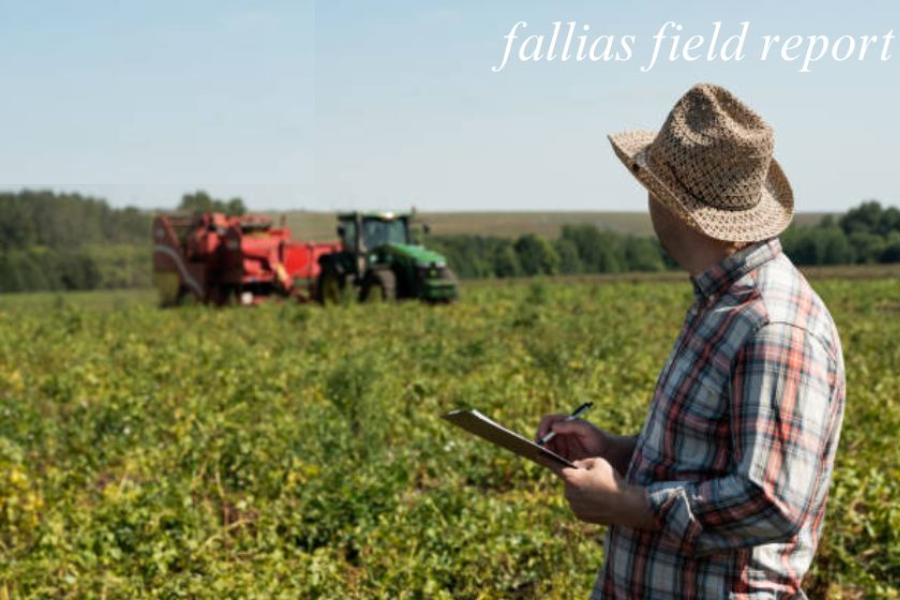Fallias Field Report Explained: Key to Observing and Analyzing Natural Phenomena And More Explore
The “Fallias Field Report” is a term gaining widespread recognition across various fields, especially in research, environmental studies, and data collection. Whether you’re a professional researcher or just passionate about fieldwork, understanding the significance and structure of the Fallias Field Report is crucial for delivering accurate and impactful results.
What is the Field Report of Fallias called?
The Fallias Field Report is a structured way of documenting observations, data, and findings during fieldwork. It acts as a vital resource for researchers, scientists, and environmentalists working in natural settings, providing firsthand information that can’t always be captured in a lab or controlled environment.
This report emphasizes real-time data collection, ensuring that the information is not only accurate but also timely and relevant. It serves as a key source of insight for those studying environmental conditions, wildlife, ecosystems, or other outdoor phenomena, giving researchers a chance to record and analyze the natural world as it unfolds.
The Fallias Field Report’s Essential Elements
To be effective, a Fallias Field Report needs to be organized and thorough. Several critical components make up a well-structured report:
- Introduction
The introduction sets the stage by outlining the research objectives, the location of the study, and the purpose of the fieldwork. It explains why the study is necessary and what the researcher aims to accomplish. - Methodology
In this section, the methods and tools used for data collection are described in detail. These could range from advanced technologies like GPS tracking and drones to more traditional techniques like manual observation and note-taking. - Data Collection
This part covers the specific information gathered during the field study. It can include environmental metrics, species counts, geographical data, or other relevant findings depending on the study’s focus. - Analysis
Here, the researcher interprets the collected data, drawing conclusions and comparing the findings to existing theories or past research. This section forms the heart of the report, as it gives meaning to the raw data.
Why Research Uses the Fallias Field Report Is Important
Field reports like the Fallias Field Report are crucial for bridging the gap between theoretical knowledge and real-world observations. While controlled experiments are valuable, they often don’t reflect the complexities of the natural environment. Fieldwork allows researchers to capture genuine, on-the-ground data, providing insights that are critical for disciplines like ecology, geography, and anthropology.
Using the “Fallias Field Report” approach signals that the findings are based on in-person observations, adding credibility to the research. This type of reporting helps ensure that the data is practical and applicable, making the research more useful for real-world applications.
Writing a Field Report on Fallias: A Guide
Writing an effective Fallias Field Report requires careful attention to detail and clarity. Here are some tips to ensure your report is comprehensive and well-organized:
- Plan Ahead
Before heading out to the field, clearly define your research objectives and the data you need to collect. This will help you stay focused and avoid distractions during the data-gathering process. - Be Detailed in Data Collection
Take detailed notes of everything you observe. Supplement your notes with photographs, maps, and GPS data to provide a complete picture of the environment. The more detailed your data collection, the easier the analysis will be later. - Organize Your Findings
Once you have all the necessary data, organize it into a clear, logical structure. Use tables, graphs, and charts to visualize the information, making it easier to understand and interpret. - Provide a Thorough Analysis
In your analysis, connect the data to existing theories and explain whether it supports or contradicts them. Make sure your conclusions are based on evidence, avoiding assumptions or leaps in logic. - Conclude with Clear Insights
Summarize your findings in a way that ties back to your original research objectives. Offer actionable insights or recommendations for further study, backed by the data you’ve collected.
Problems with Writing a Field Report on Fallias
Fieldwork, including the Fallias Field Report, comes with its own set of challenges. Unpredictable weather, difficult terrain, and time constraints can all affect the quality and quantity of data collected. To tackle these issues, researchers need to plan carefully and remain flexible, adapting their approach when unforeseen circumstances arise.
Despite these challenges, the value of field reports cannot be understated. They provide a realistic view of conditions in the natural world, offering insights that might be missed in controlled settings. The Fallias Field Report method ensures that data is not only gathered but that it’s done in a way that reflects actual conditions, making it a critical tool in many research fields.
Facts:
- Definition: The Fallias Field Report is a structured method of documenting real-time data, observations, and findings gathered during fieldwork in natural settings.
- Fields of Application: It’s commonly used in environmental research, ecology, geography, anthropology, and other fields that require on-the-ground data collection.
- Importance: It bridges the gap between theoretical research and real-world data, providing first-hand insights that can’t always be captured in a lab or through controlled experiments.
- Structure: A Fallias Field Report typically includes an introduction, methodology, data collection, and analysis sections, helping researchers present their findings in a clear and organized manner.
- Data Collection Methods: Data can be gathered using both advanced tools (GPS tracking, drones) and traditional methods (manual observation, note-taking).
- Challenges: Researchers often face obstacles like unpredictable weather, difficult terrain, and time limitations during fieldwork.
- Credibility: Reports that use the Fallias method provide reliable, first-hand data, which enhances the credibility and practicality of the research.
- Application of Findings: The Fallias Field Report not only helps to validate existing theories but also provides actionable insights that can be applied in real-world scenarios.
Summary:
The Fallias Field Report is a vital tool used in various research fields, particularly environmental and natural sciences. It emphasizes real-time data collection, offering accurate and relevant insights that can’t be obtained through controlled experiments. A well-structured report includes an introduction, methodology, data collection, and analysis, ensuring the data is both detailed and organized. Challenges such as weather and terrain are common, but the benefits of gathering genuine, on-the-ground data outweigh these hurdles. The Fallias Field Report approach strengthens the credibility of research and helps produce actionable insights for practical application.
FAQs:
- What is the Fallias Field Report?
- The Fallias Field Report is a structured method of documenting observations and data gathered during fieldwork, often used in environmental research, ecology, and anthropology.
- Why is the Fallias Field Report important in research?
- It allows researchers to collect real-time, on-the-ground data, providing insights that controlled experiments may not capture. This enhances the credibility and applicability of the findings.
- What are the key components of a Fallias Field Report?
- The main elements include the introduction, methodology, data collection, and analysis. Each section plays a critical role in organizing and interpreting the findings.
- How do researchers collect data for the Fallias Field Report?
- Data can be collected through various methods, such as GPS tracking, drones, manual observations, photographs, and note-taking.
- What challenges are faced when conducting a Fallias Field Report?
- Researchers often face difficulties like unpredictable weather, inaccessible terrain, and time constraints during fieldwork.
- How does the Fallias Field Report enhance the credibility of research?
- By relying on first-hand observations and real-world data collection, the Fallias Field Report ensures that the research is both accurate and relevant to actual conditions.
- Can the Fallias Field Report be used in controlled environments?
- While it is primarily used for outdoor and natural settings, some elements of the Fallias Field Report can be adapted for controlled environments where real-time data is crucial.
- What tools are commonly used for data collection in a Fallias Field Report?
- Researchers may use advanced tools like GPS and drones, along with traditional methods like note-taking, photography, and physical measurements.
- How should the analysis section be handled in a Fallias Field Report?
- The analysis should interpret the data in relation to existing theories, drawing conclusions based on evidence without making unsupported assumptions.
- How can I improve the quality of my Fallias Field Report?
- Plan your research objectives ahead of time, collect detailed data, organize your findings systematically, and ensure that your analysis is backed by evidence to create an effective report.
Stay informed with in-depth reports and expert analysis at ObjectiveRelease.com.






